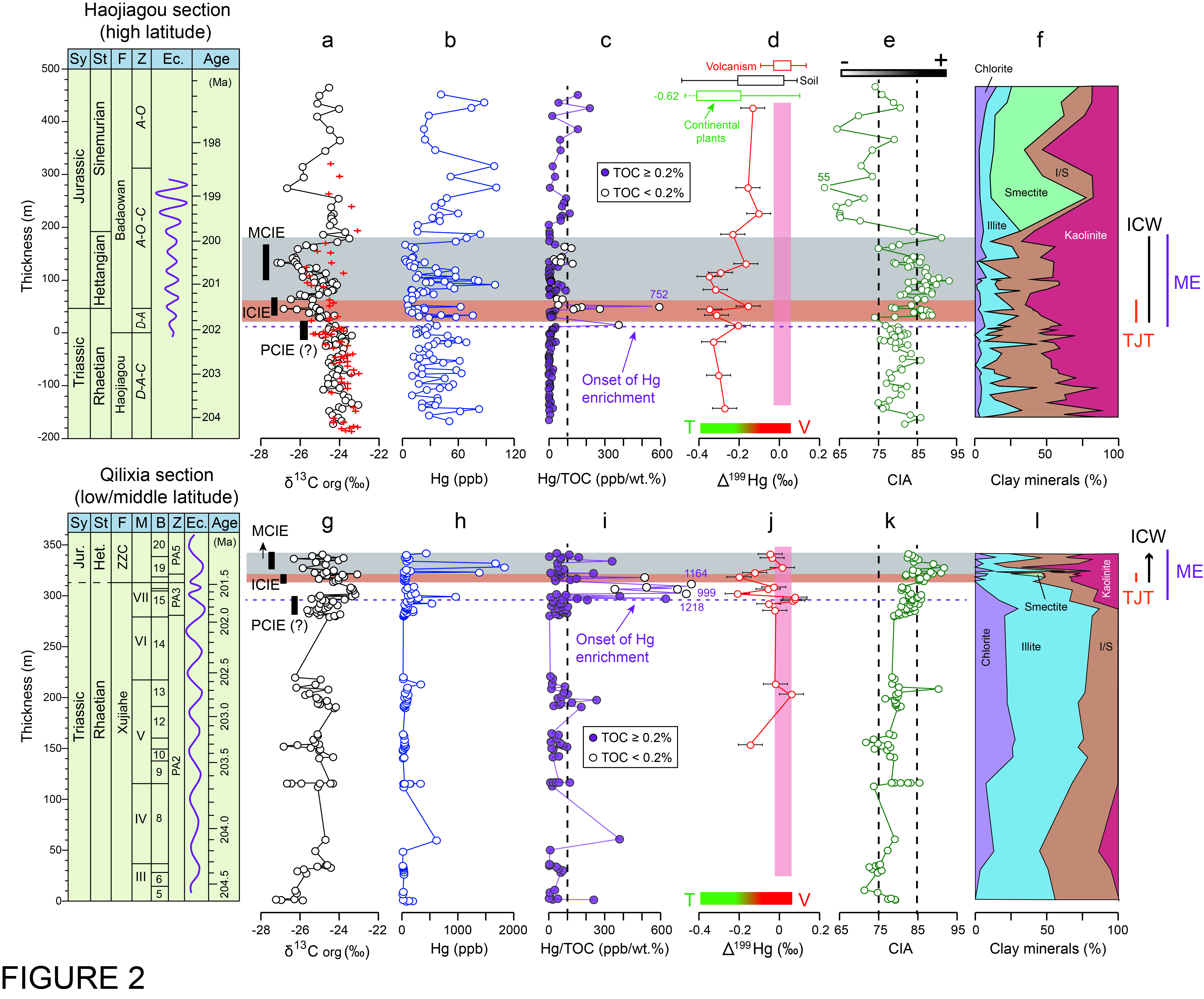Intensive volcanism has been considered a major driver of environmental/climatic changes through Earth history, including global warming due to volcanogenic CO2 emissions, ocean acidification, and atmospheric ozone depletion, which are regarded as potentially important killing mechanisms during mass extinctions of life. However, direct evidence of a linkage between volcanism and environmental/climatic perturbations during these Earth-system crises has been largely lacking to date.
The Triassic-Jurassic transition (~201 million years ago) saw one of the most catastrophic volcanic eruptions during the Phanerozoic, namely the Central Atlantic Magmatic Province (CAMP), as well as the end-Triassic mass extinction, which killed off ~60% of biotic species on Earth. However, due to the lack of volcanic ash sediments outside its eruption sites, the spatial extent to which the volcanism has had impact on is not well understood.
Recently, researchers from the China University of Geosciences (Wuhan) Nanjing Institute of Geology and Palaeontology, and others, identified elevated Hg concentrations in ancient lake sediments from two sites in China.Since these two sites are spatially distant from the CAMP, which can be considered direct evidences of intense volcanism in association with CAMP.At the same stratigraphic level, they discovered pronounced elemental and mineralogical changes, providing evidence of enhanced chemical weathering intensity during the CAMP eruptions.
Using an astronomically calibrated temporal framework, these researchers demonstrated persistent effects of volcanism on continental weathering over a ~2-million-year interval during the Triassic-Jurassic transition. This finding confirmed that chemical weathering of rocks on land plays a key role in drawing down excess CO2 in the atmosphere in order to maintain relatively stable climatic conditions on Earth at longer time scales. Also, by comparing data between two study sites at different paleolatitudes, these researchers were able to show that chemical weathering intensity was enhanced to a greater degree at high paleolatitudes than at low paleolatitudes.
This study is the first to show direct linkage between intensified volcanism and its chemical weathering response outside of the CAMP region during the Triassic-Jurassic transition, a major greenhouse crisis in Earth history with implications for the modern.
This study was published online in the journal Nature Communications with the title “Intensified continental chemical weathering and carbon cycle perturbations linked to volcanism during the Triassic-Jurassic transition”.

Profiles of Haojiagou (Upper, HJG) and Qilixia (Lower, QLX) sections: (a, g) Organic carbon isotope (δ13Corg, ‰); (b, h) Mercury concentrations (Hg, ppb); (c, i) Ratios of mercury to total organic carbon (Hg/TOC, ppb/wt.%); (d, j) Mass independence fractionation of odd-Hg isotope (Δ199Hg, ‰); (e, k) Chemical index of alteration (CIA) and (f, l) clay minerals.